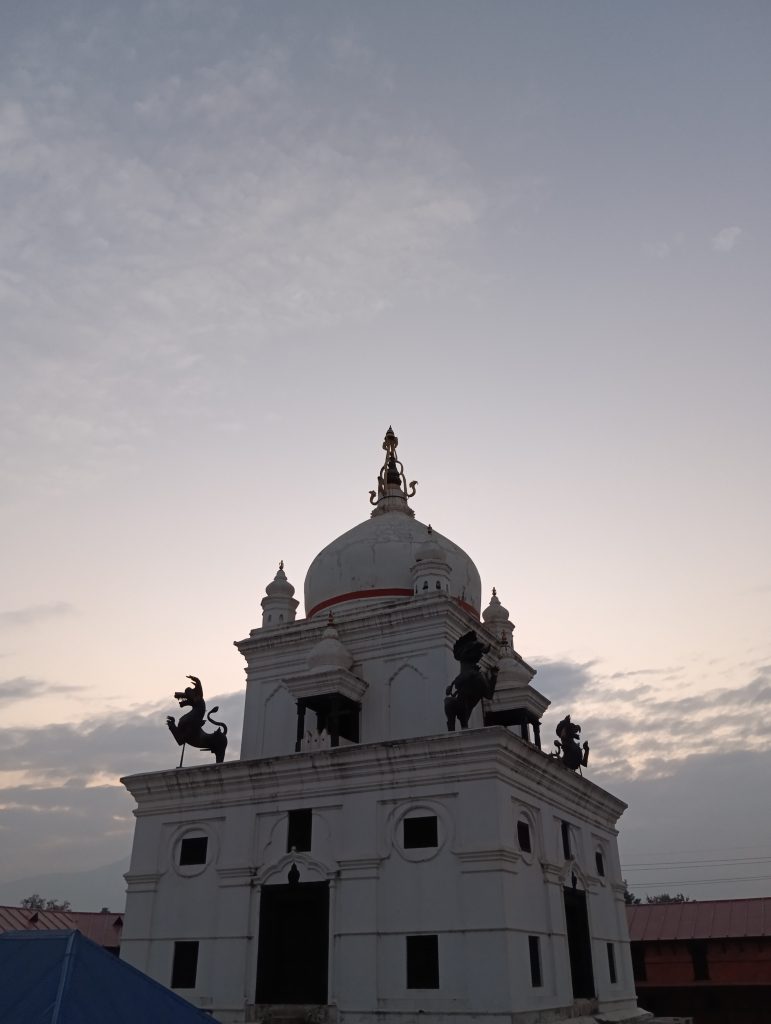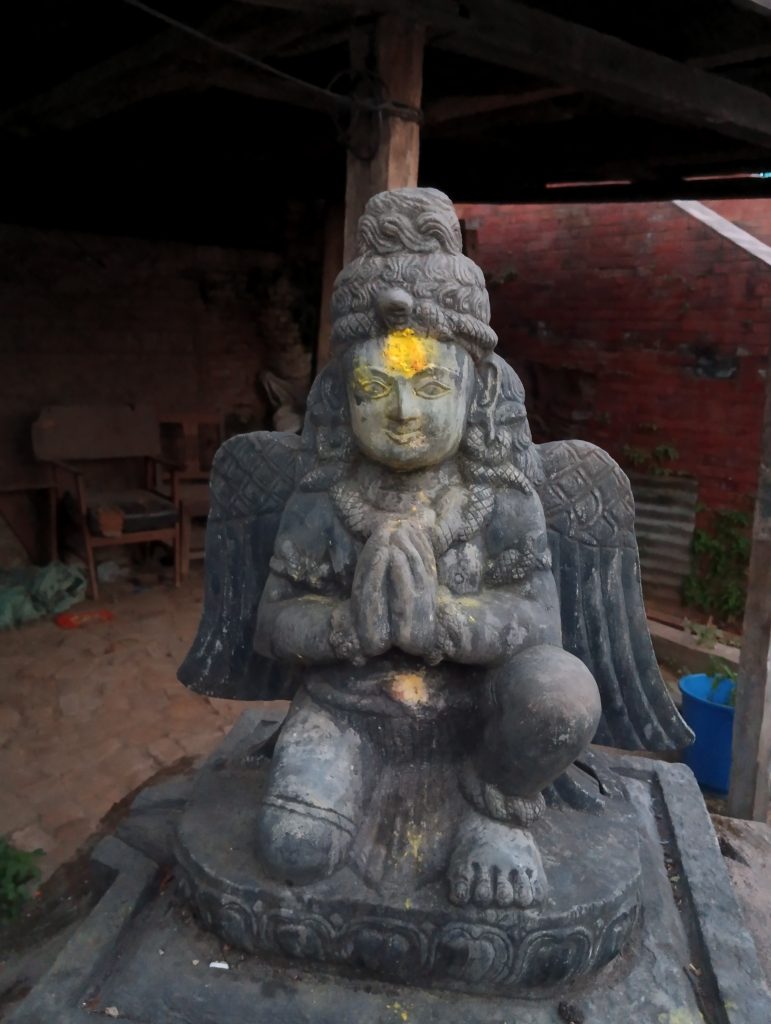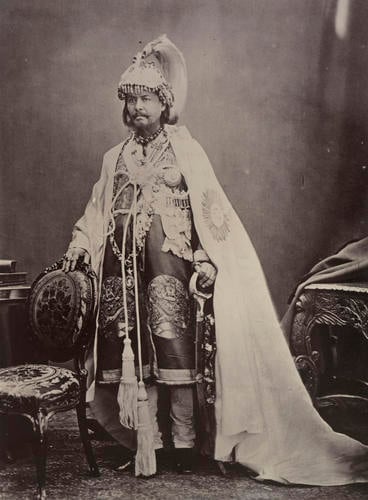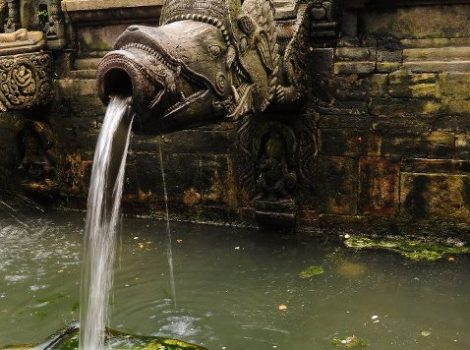
A landmark that speaks of a change in the regime
This temple of Jung Hiranya Hem Narayan Temple lies at Thapathali before crossing the Bagmati bridge. It is situated at the confluence of the Tukucha Rivulet and the Bagmati. This area is also called Kal Tirtha. Near Kalmochan Dovan, we can find the Navhareshwar Mahadev temple in the southern corner of a spacious stone-paved courtyard. This is where the district of Kathmandu is then separated from Lalitpur. Apart from its feel of Moghul architecture with Hindu features, it is surrounded by some myths or facts. https://www.britishcouncil.org.np/sites/default/files/tour_manual_english.pdf
History
History is rumored that the temple has a direct correlation with the Kot massacre that happened in 1846 A.D. Then the ruling king Rajendra Bir Birkram Shah was known as a weak, wily, and jealous-natured king. He mostly avoided any domestic to governmental issues. The KOT massacre is the culmination of the most unpredictable political scenario dominated by fear, frustration, jealousy, corruption, selfish interest, senseless intrigue, and manipulation.
On that very day, the future of the nation was rewritten and the whole governance changed and so began the Rana regime. An estimated (the figure is not that accurate) 30-40 civilians, military personnel, palace guards, prime minister (his relatives), senior ministers, and army generals were massacred at the Hanuman Dokha Palace armory( KOT) in Kathmandu on September 14, 1846.
Penence from the sin
It is rumored that those massacred in the KOT were buried in the same place where the Temple of Jung Hiranya Hem Narayan Temple is located. In the past, the temple area has been a place for mourning for the deceased of the Shah and Rana families. It has also been said that the late Janga Bahadur Rana built the temple as a penance or a voluntary self-imposed punishment for the sinful act of wrongdoing. But to what extent, is it a penence or domination?
Junge-Hiranya Hem Narayan Temple(a dominace or repent)

Jung Hiranya Hem Narayan Temple is believed to have been built in 1874 A.D. by the direct instruction of then prime minister Janga Bahadur Rana, named after his two wives Hirnaya and Hem. From the religious perspective, almost all the major sacred monuments and worshippers in Nepal are named after the deity but, this temple precedes the name of the Janga and his two wives followed by the deity lord Narayan. The main temple is surrounded by 6 different temples with the feel of Moghul architecture with Hindu features. It has 4 legendary griffins on the cornice of the first story. Griffin probably came from the Levant, also known as the Eastern Mediterranean, in the 2nd millennium BCE. These mythical creatures are half eagle and half lion. These are said to guard the gold of the kings as well as other priceless possessions. Is it the KOT massacre was the entry of the Rana regime hence Janga Bahadur Rana denoted this temple with the mark of griffin on all four directions of the temple.
To the east of the Jung Hiranya Hem Narayan Temple, there is a life-size statue of the Garuda made up of bronze a marvelous art. Narayan is one of a thousand names for Vishnu, and Garuda is the vehicle mount of the Hindu god Vishnu. Another interesting fact about the temple is there is a life-size statue of Jung Bahadur on a stone pillar that is right behind the Garuda. From a historical perspective or spiritual principles, every devotee of our past has either aligned their sculpture with the idol or below. On this occasion Janga Bahadur Rana has positioned himself way above, and why he did such? Is it an act of power or his domination?

As we speak
Like many historical places in and out of Kathmandu, Jung Hiranya Hem Narayan Temple has also lined up on the verge of diminishing. This temple was badly damaged by the 2015 earthquake and has been renovated. Due to the lack of a proper blueprint, it has been said it has been reframed to its original glory. Only time can answer this, still the positive side of it was reconstructed with traditional materials like mortar, bricks, wood, and surki, containing brick dust and limestone.
Yet, it looks as if the governance responsible for the reconstruction went on a tea break and did not return. The temple is not up to the standards that visitors will have a convenient way to explore it. There are wood with nails used for reconstruction lying around the premises. The main temple is surrounded by 6 different temples with the feel of Moghul architecture with Hindu features. It is built on a square base with four doorways and two rows of lattice windows. There is no easy access to the main deity and on our visit, we did ask the temple opening time. We found out that it is worshipped by a priest once in the morning and once in the evening but there are no timings. We waited around 2 hours for the priest to arrive for the evening prayer but he was nowhere to be found.
On top of the above, there are many important historical items lying around the premises as if abandoned. It is a sad irony as we discovered more and more, these could have been much more taken care of. It is a part of history and history is a part of this nation- our past which cannot be denied, buried or forgotten. The government should focus on preserving such historical monuments.




The person responsible for the reform that took Nepal in a new direction.







